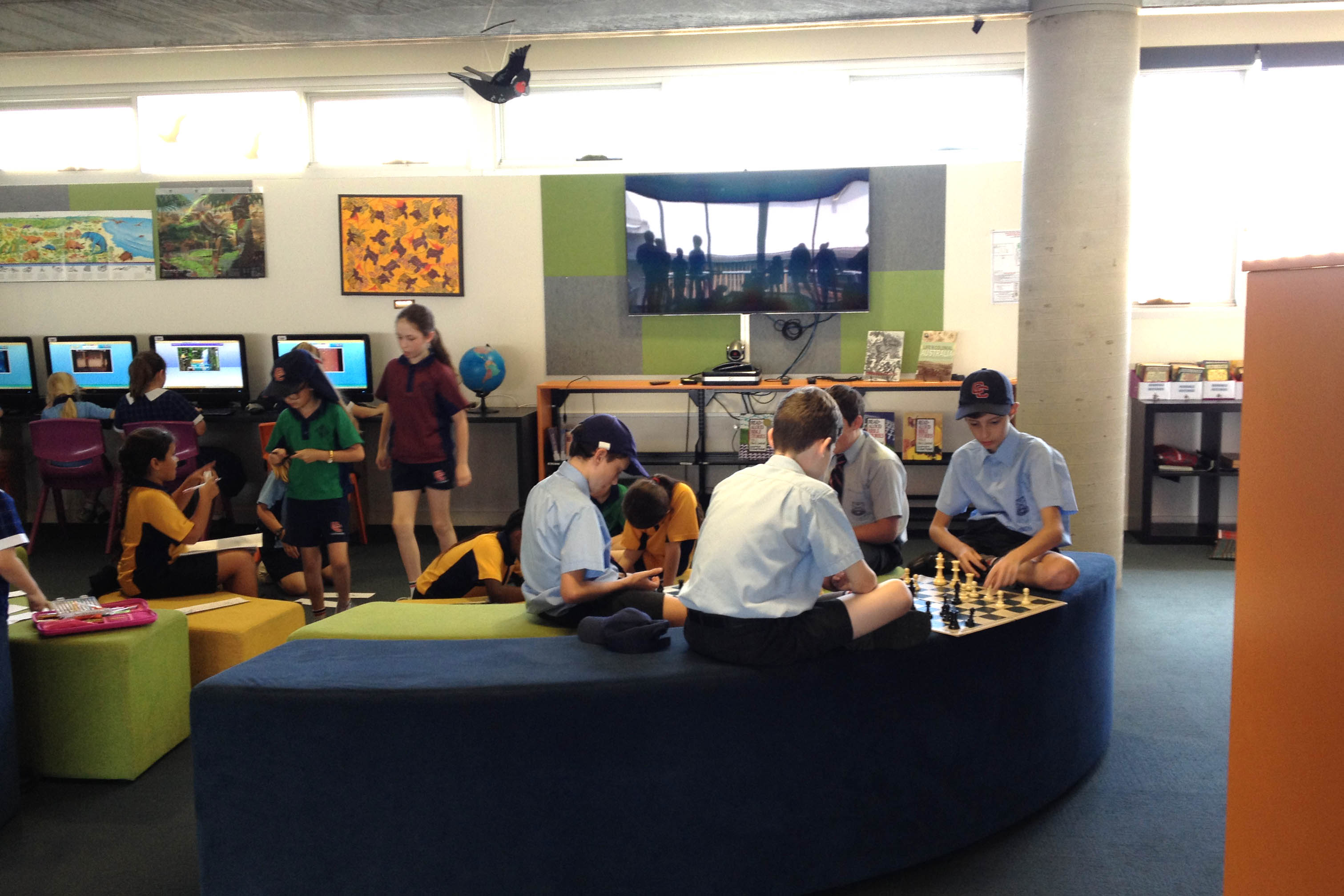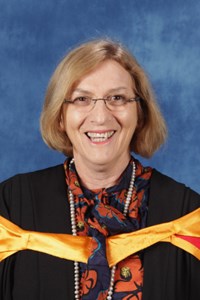Issue 101
Term 2 2017
What do our students really want?
Megan Stuart, teacher librarian at Canterbury College, surveyed her students to discover what drew them into their resource centre — and what it could do to draw them in more.

If there is one professional group familiar with the fear and excitement that disruptive technology can bring, it is library staff. Over the course of nearly four decades teaching in schools and libraries, I have witnessed incredible change and welcomed exciting progress in the way information is accessed, books are published and students are interactively taught. On occasion it has caused me to ponder unsettling questions such as: Will hard-copy resources eventually become irrelevant? Will students grasp the importance of the legitimacy of information in the digital age? Will my grandchildren or their children ever know (or care) what the Dewey Decimal Classification is? And amidst all the transformation, will knowledge or culture be lost?
Technology, media and our modern students are permanently forcing the school librarian to hone his or her expertise and crystallise the core values and purpose of their centre to meet the evolving needs of its pupils. This year, inspired by the Lean Startup principles, I decided to take action. Instead of compiling lists of reasons that might stop students walking through the doors of the Canterbury College Resource Centre, I decided to decipher what it was exactly that kept students coming back. And my findings were not only surprising but greatly reassuring.
The Lean Startup theory was coined by Eric Ries, one of Harvard Business School’s Entrepreneurs- in-residence, and has been drawn on by some of today’s greatest enterprises (for example Instagram, Uber and Airbnb). Ries argues that some of our most successful institutions, businesses and movements are no longer drafting intricately detailed business plans and rolling them out according to predetermined forecasts. Instead, the best founders and managers are engaging in a continuous feedback loop with their clients to ensure the key objectives of the enterprise are being delivered in the most engaging and adaptive way (Blank 2013).
We nurtured and amplified the use of the library in ways that were already popular (instead of forcing new tactics to increase student engagement). Our student visitors were frequent, happy and calm.
Reading about Ries’s theory instantly struck a chord. Some of our most inspired and innovative ideas at our Resource Centre have not necessarily come from external sources but from within the shared Canterbury College community. When the lines of communication between school staff, students and their parents are open, our services evolve and flourish.
Therefore, in an attempt to discover what drew our chief clients, our students, into the resource centre I drafted a simple seven-question survey for all students across years 2–6 to complete. The questions centred around the children’s personal use of the library. We asked what time of day, for which tasks and with whom they came through our doors. We also asked which key areas they wanted improved and provided a list they could choose from to indicate their level of interest in some of our key functions.
Generally, we expect students to visit as part of their scheduled library classes to learn how to access information and borrow. In their spare time on school grounds, they are encouraged to undertake research for their projects using our electronic readers, databases, and hard-copy resources, as well as to borrow books for recreational reading. They are also encouraged to attend various clubs; experiment with coding, robotics, and Lego; play with board games and puzzles; use iPads and green screens to create movies and book trailers; and use our interactive screen (this can include Skype calls with authors and other schools).
In addition, the library hosts a number of annual cultural events including book week, book fair, ‘dress up as your favourite character’ day, barbecue for books, our student and parent book clubs, our Shrove Tuesday master chef bake off, and our Canterbury Drama Group performances.
After conducting the survey, I sat down to undertake an initial read-through of the answers and was immediately pleased to notice the first few responses indicated a keenness for recreational reading at the library. I was expecting the students to show their preference for our gadgets and screens or our big annual bake off, which is always a sugary hit. I read a few more responses and raised an eyebrow. Yet more answers about reading, about quiet time and about our collection of literature. By the time I collated all the survey results, I was positively brimming with excitement. Across all year levels there was an overwhelming recurrence of three main answers. Students were clear in telling us that they most liked to visit our library:
- to read hard-copy fiction
- during their lunch hour
- with their friends.
In fact, almost all Year 6 students (90 per cent) indicated their favourite activity within the library is to read fiction; 65 per cent enjoyed being with their friends in the library, while 77 per cent were lured in by the comfortable furniture. Around 60 per cent of all junior school students mentioned that the temperature of the library was a significant drawcard (air conditioning and heaters depending on the season). And, rather pleasingly, the second most popular activity for Year 2 students to undertake in the library (behind colouring in and creating craft) was volunteering to help!
We also learned that searching via our OPAC and databases had been overshadowed by browsing and asking staff, and that the older students wished to visit at times when the much younger students were not visiting. All year levels disclosed they preferred a reduced noise level within the library.
Questions asked during the survey
- My year level is...
- Why do you come to the library?
- What time of day do you usually visit the library (excluding class visits)?
- The best parts of the library are...
- What I would like to see improved in the library is...
- What is your favourite annual library event? Why?
- If the library closed, what is the one thing you would miss the most?
Please indicate (by using a number from 1 to 4) how often you use the following (1 for never; 2 for I forget; 3 for sometimes; 4 for use them a lot):
- Fiction books
- Non-fiction books
- School databases
- Library catalogue
- Ebooks
So, after synthesising the answers with Jenny George, our dean, we discovered many of the advantageous changes that were indicated by our student users could be implemented almost immediately and without significant expense. We invested in more comfortable furniture and apportioned more of our budget towards increasing our large and clearly popular works of fiction collection. We trialled splitting times for year groups to use the library and rolled out a campaign to raise database awareness and installed new touch screen OPACs. And of course we proudly put our helpful Year 2 students to work returning picture books to their correct shelves.
We nurtured and amplified the use of the library in ways that were already popular (instead of forcing new tactics to increase student engagement). Our student visitors were frequent, happy and calm. And as larger numbers continued to roll in and settle into our extended range of comfortable furniture every lunchtime, I was thrilled.
Our modern and technologically savvy students told us directly that their preferences actually align with the historical purpose of libraries. Even during the late Roman Republic, ‘Cicero records building some new reading rooms (exhedria) in a little colonnade’ where reading and intellectual discussion took place (Affleck 2012).
Today at Canterbury College, some 2,000 years later, our students indicated a similar ideal. They want a place sheltered from the scorching Queensland sun or the bitter winter winds of the school playground where they can sit comfortably and enjoy the narrative of a good work of fiction, quietly, among their peers.
If the school library can create a place where a culture that reveres literature and time with peers can blossom, then I will steadfastly encourage it. It is well accepted that culture (or ‘funds of knowledge’) and education are not only linked but extremely complementary. We all know the threat of social media and mobile devices are burdening our interactions and relationships. It turns out our students are happy socialising with nothing but a few books between them. We are looking forward to noting whether the increased popularity and familiarity with the library will have a positive impact on individual research and learning outcomes. And we will certainly be keeping our client feedback loop open in the future.
References
- Affleck M, 2012, Roman Libraries during the Late Republic and Early Empire, University of Queensland, https://espace.library.uq.edu.au/view/UQ:292896
- Blank S, May 2013, Why the Lean Start-up changes everything, Harvard Business Review, https://hbr.org/2013/05/why-the-lean-start-up-changes-everything
Image credits:
- Photo supplied by Canterbury College.
